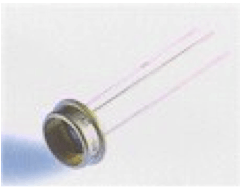PIN Photodiodes for Free Space Optics
Summary
PIN devices are cheap and plentiful – however they lack the internal gain of APD (Avalanche Photodiodes) hence make worse receivers for Free Space Optics (FSO, Laser, Laser Link, Infrared, Optical Wireless) links
PIN Technology
Photodiodes are light sensitive semiconductor devices that are manufactured in essentially the same way as semiconductor diodes used in conventional electronic circuits. The primary differences are that photodiode chips are larger and they are packaged to allow light onto the sensitive area of the diode.

Photodiodes offer many conveniences and advantages that make them very practical for a wide range of applications:
They can easily measure from picowatts to milliwatts of optical power
Depending on the semiconductor material used, they can detect wavelengths form 190 to > 2,000 nm
They are small and light weight
They have very reproducible sensitivity
They are inexpensive
Very large areas can be fabricated (> 10cm2, but with cost increasing with area)
They can be very responsive, with risetimes as fast as 10 picoseconds
If noise presents a problem when measuring a few picowatts of light with a standard photodiode, there are advantages in using an an avalanche photodiode (APD) which offers a current gain internal to the photodiode structure of up to about 100.
Silicon Photodiodes
Silicon based photodiodes cover the wide range of wavelengths from 190 to 1100 nm (the lower limit is set by absorption of ultraviolet light in air). Germanium (Ge) photodiodes overlap the silicon response spectrum and are usable to about 1600 nm. Semiconductors that are compounds of gallium, arsenide, indium, antimonide and phosphorous can be specially fabricated to cover small sections of the 190 to 2000 nm spectral range. For instance, the fiber optics industry uses indium-gallium-arsenide (InGaAs) detectors for the 800 to 1800 nm range. More exotic and expensive photodiodes can sense energy much further out in the IR spectrum.
Photodiodes are widely used in our high-tech society, in applications ranging from sensors for door openings, assembly line controls, load levelers in luxury cars, to personal blood sugar meters for diabetics, sun-tan exposure meters, smoke detectors, x-ray baggage inspection systems and even cranial pressure sensors for head injury patients.
For Further Information
Please Contact Us
You must be logged in to post a comment.